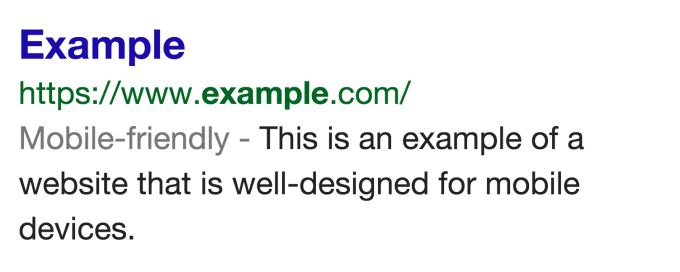Google today announced two notable changes that will affect the rankings of search results for users accessing Google search on mobile devices. It will now take into consideration a site’s mobile-friendliness as one of its ranking signals, and information from indexed mobile applications will also begin to influence ranking for signed-in users who have the app installed on their smartphone.
“As more people use mobile devices to access the internet, our algorithms have to adapt to these usage patterns,” explains Google in its announcement.
The changes follow a number of previous efforts Google has made to improve its search results for mobile users. In 2013, for example, it rolled out ranking changes that would affect sites that were misconfigured for smartphone users, including those frustrating situations where a specific URL would redirect all smartphone users to the website’s mobile homepage instead of their preferred destination. This was common among news sites, in particular, as users would often click a link to read a certain story and would end up landing on the site’s main webpage, the story nowhere to be found.
Last summer, meanwhile, Google began flagging sites that wouldn’t display on mobile devices due to the technology they used – like those built with Adobe Flash, which meant they wouldn’t display on iOS devices or Android 4.1 and higher.
And in November, Google began adding a “mobile-friendly” label to its search results accessed on mobile devices to indicate they would display well on your smartphone’s small screen, after first testing “warning labels” earlier in the year. It noted at the time it was also testing the use of the mobile-friendly criteria as a ranking signal.

Today, Google says that starting on April 21, it will expand its use of mobile-friendliness as a ranking signal to all languages worldwide – something it notes will have a “significant impact” on search results.
In a blog post detailing the changes, the company points website owners to a number of resources that can help them prepare for this shift, including its guide to mobile-friendly sites, its Mobile-Friendly Testing tool, and its Mobile Usability Report.
In addition, the company also said it will begin taking advantage of its efforts with deep-linking technology to begin to surface information from mobile apps higher in its search results.
Deep links, for those unfamiliar, point to specific pages within mobile applications themselves. That means developers who implement these links in their apps allow Google to index their apps in a similar way as it does websites today.
This “app indexing” technology was first introduced in fall 2013 during Google’s press event regarding its KitKat mobile operating system. At the time, the company explained how Android developers would be able to attract and re-engage app users by allowing Google search to point to their app’s pages directly.
In the months since that announcement, the company has been steadily expanding the number of mobile apps that took advantage of deep linking, adding dozens more last spring, then later integrating the deep-linking technology with AdWords in order to allow developers to create ads that would lead to users launching their app.
In related news, Google also announced this morning it was going to begin allowing app developers to run search ads in its Google Play store’s results, too.
